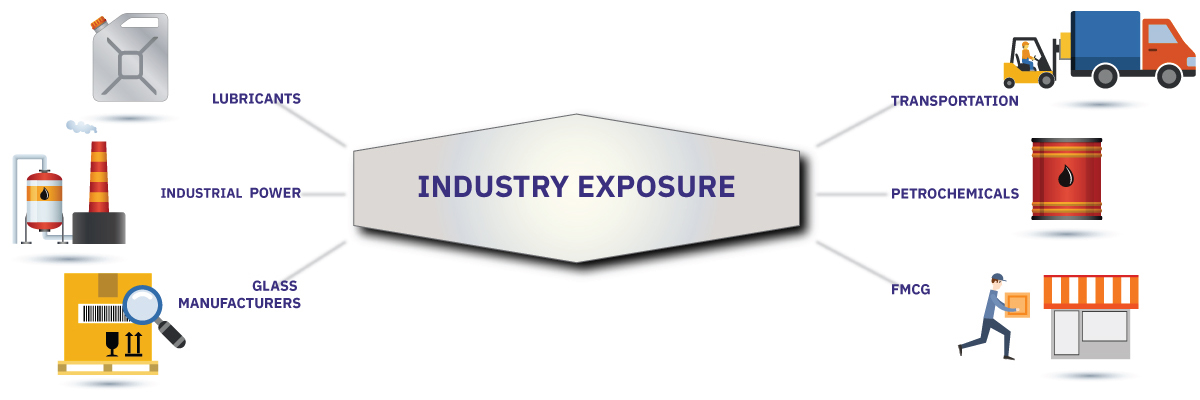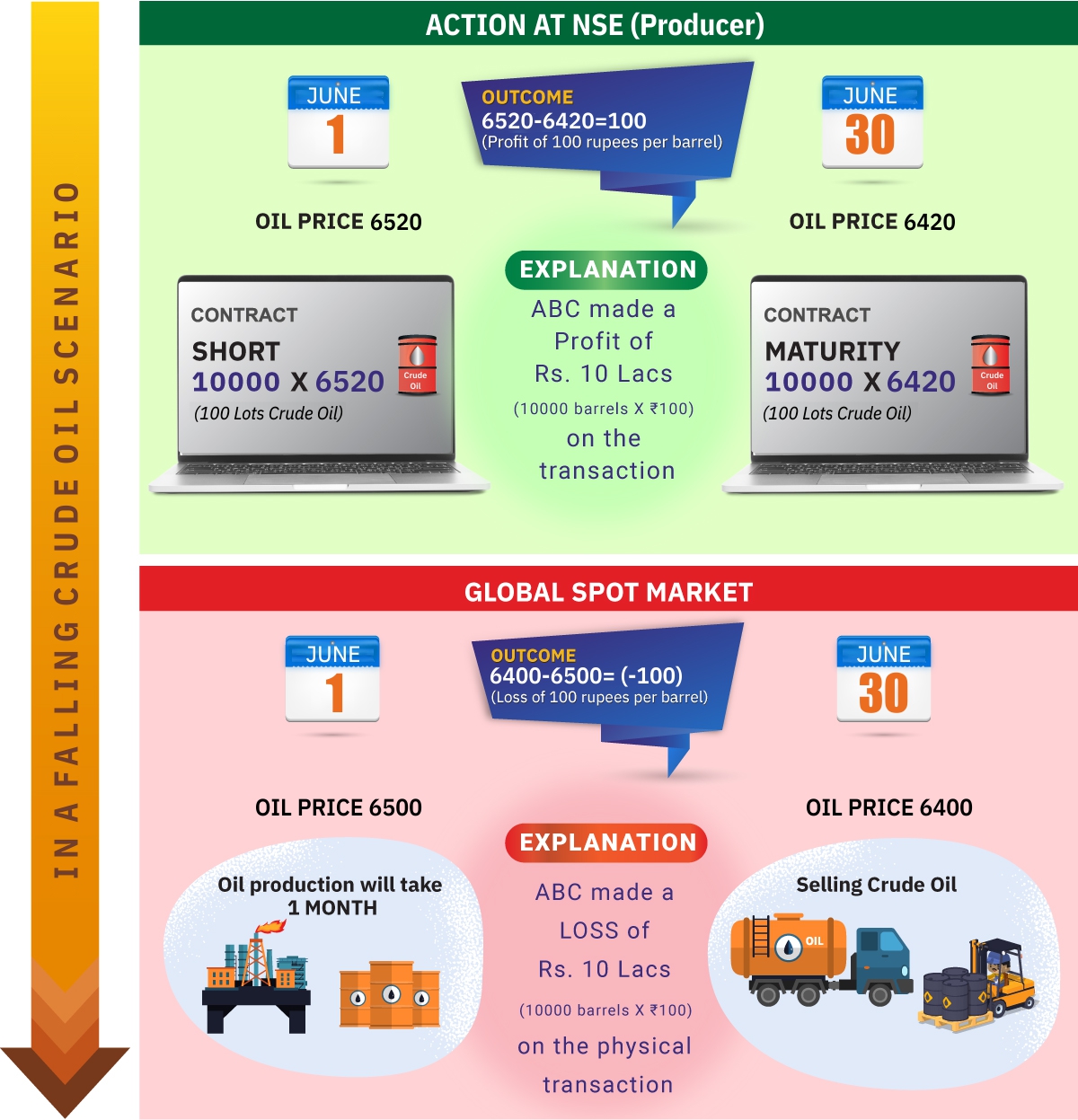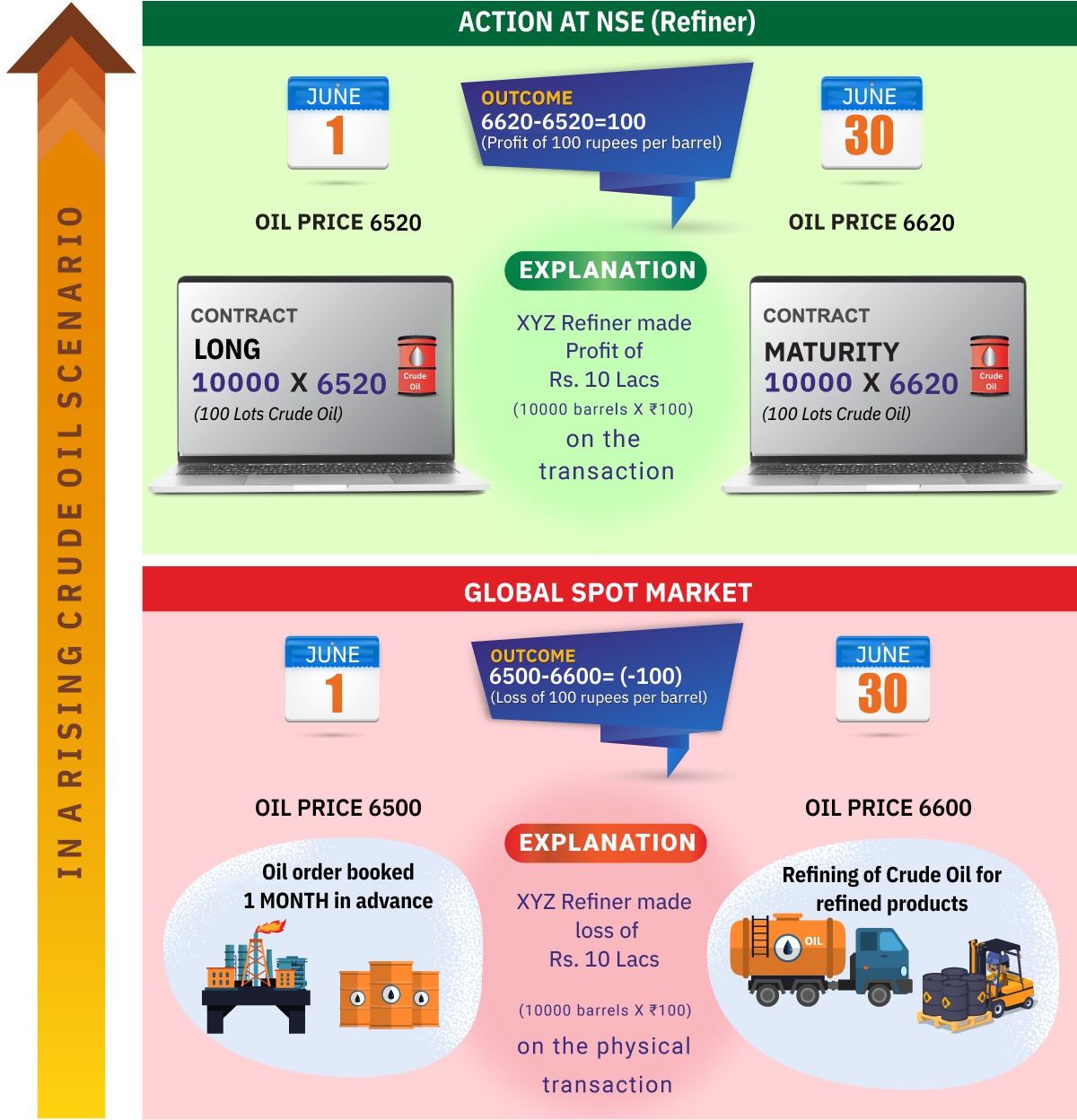(Hedge with NSE Brent Crude Contracts - Hedging at NSE offers key advantages like INR-denominated contracts, cash settlement, transparent pricing, and economical transaction costs)
Brent Crude Oil
Crude Oil Derivatives (Brent and WTI) are the highest traded product in the Commodities market space.
NSE has successfully launched Brent Crude Oil Futures on 1st March 2019 with regular 100 barrels.
Crude Oil is a naturally occurring, unrefined petroleum product composed of hydrocarbon deposits and other organic materials. A type of fossil fuel, crude oil can be refined to produce usable products such as gasoline, diesel and various forms of petrochemicals. It is a non-renewable resource, which means that it can't be replaced naturally at the rate we consume it and is, therefore, a limited resource.
Brent Crude is a major trading classification of sweet light crude oil that serves as a benchmark price for purchases of oil worldwide. This grade is described as light because of its relatively low density, and sweet because of its low sulphur content. Brent Crude is extracted from the North Sea and comprises Brent, Forties, Oseberg, Ekofisk, Troll and Midlands crudes (BFOETM Quotation).
Brent is the leading global price benchmark for Atlantic basin crude oils. It is used to price two-thirds of the world's internationally traded crude oil supplies.
India is 3rd largest consumer of crude oil in the world, after the United States and China.
Factors affecting Market fundamentals
- US Crude Inventories
- Economic factors: Recession, Inflation & Crisis
- Speculation, Hedging & Investment
- Geopolitical actions
- Weather
- OPEC & Non-OPEC Decisions & Broadcasts
- Global Economic Growth & Trade Policies
Crude used in following Industries
- Oil Marketing/Refining Companies
- Glass Manufacturers
- Transport / Aviation
- Lubricants
- Petro-Chemical industry
- FMCG
- Industrial Power
- Paint Manufacturers
- Plastics Industry
- Rubber / Tyre Manufacturers
 (Crude oil price movements affect multiple industries like lubricants, power, glass, transport, petrochemicals, and FMCG)
(Crude oil price movements affect multiple industries like lubricants, power, glass, transport, petrochemicals, and FMCG)
NSE Brent Crude Oil Specifications
| BRENT CRUDE | Regular | |
|---|---|---|
| LOT SIZE | 100 Barrel | |
| SYMBOL | BRCRUDE | |
| TICK SIZE / QUOTATION | ₹ Per 1 Barrel | |
| CONTRACT CYCLE | Monthly contracts | |
| EXPIRY | Last business day of the contract expiry month | |
| SETTLEMENT | Cash Settled | |
| DUE DATE RATE(DDR) / FINAL SETTLEMENT PRICE (FSP) |
|
|

(In a falling crude oil price environment, a producer named ABC uses NSE futures to hedge.
ACTION AT NSE (Producer) – Hedged Position
- June 1: ABC, the producer, expects crude oil prices to fall. So, they short 100 lots (10,000 barrels) of crude oil futures at ₹6520/barrel on NSE.
- June 30: The price drops to ₹6420/barrel.
- Outcome: The short position gains ₹100/barrel, resulting in a profit of ₹10 lakhs (10,000 barrels × ₹100).
GLOBAL SPOT MARKET – Physical Sale
- June 1: ABC begins oil production when the spot price is ₹6500/barrel.
- June 30: By the time the oil is ready to sell, the price has dropped to ₹6400/barrel.
- Outcome: ABC incurs a loss of ₹100/barrel, totalling ₹10 lakhs (10,000 barrels × ₹100).
The ₹10 lakh profit from the futures contract offsets the ₹10 lakh loss in the physical market. This demonstrates how hedging with NSE futures can protect producers from adverse price movements in volatile markets.)
(
(In a rising crude oil price environment, a refiner named XYZ uses NSE futures to hedge.
ACTION AT NSE (Refiner) – Hedged Position
- June 1: XYZ, the refiner, anticipates a rise in crude oil prices. So, they go long on 100 lots (10,000 barrels) of crude oil futures at ₹6520/barrel on NSE.
- June 30: The price increases to ₹6620/barrel.
- Outcome: The long position gains ₹100/barrel, resulting in a profit of ₹10 lakhs (10,000 barrels × ₹100).
GLOBAL SPOT MARKET – Physical Purchase
- June 1: XYZ books crude oil one month in advance where spot price was ₹6500/barrel
- June 30: The price rises to ₹6600/barrel, and XYZ must now purchase at the higher rate.
- Outcome: XYZ incurs a loss of ₹100/barrel, totaling ₹10 lakhs (10,000 barrels × ₹100).
The ₹10 lakh profit from the futures contract offsets the ₹10 lakh loss in the physical market. This demonstrates how hedging with NSE futures helps refiners manage rising input costs and maintain financial stability)






